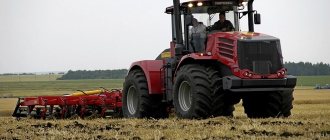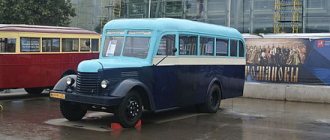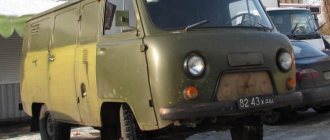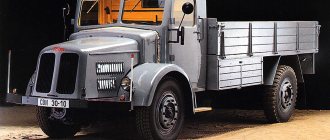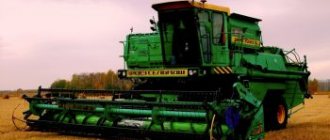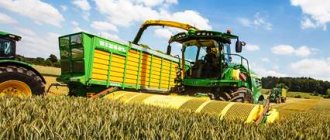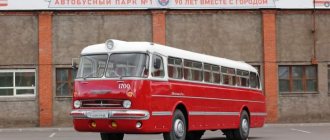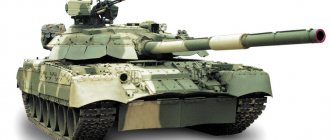OverRoad Travelers Club
When the production of Werdau W45 trucks began in Ludwigsfeld, the designers immediately began work on a new family.The first prototypes of the W50 were tested in 1962. The car had a payload capacity of 5.2 tons and was equipped with a two-seater cabin above the engine. The W50 used a four-cylinder water-cooled swirl-chamber diesel engine, inherited from the Sachsenring S4000-1. The engine power was 90 hp, but for the W50 it was increased to 110 hp. The all-wheel drive version of the W50 was also tested.
Already in 1963, the magazine Der Werker-Praktiker reported on the release of cars of a new family. In fact, the available production capacity did not allow the launch of mass production, especially since the production of the previous H6 family continued. In fact, mass production of the W50 began only in 1965, when a new plant was built in Ludwigsfeld.
IFA W50 cars immediately gained enormous popularity both in the GDR and in the countries of the socialist camp, where they were massively exported. Naturally, they were also supplied to the USSR.
Soviet drivers and mechanics also highly appreciated the cars of the new family. With a wheelbase length of 3200 mm (later options with a wheelbase of 3700 mm were offered), which is slightly less than that of the GAZ51 (3300 mm), the IFA W50 was equipped with a cargo platform 4500 mm long (like the MAZ-200). The comfortable cabin above the engine provided excellent visibility. A powerful engine with good throttle response ensured high driving characteristics. An interesting feature was the use of "exhaust braking". A damper located between the exhaust manifold and the muffler, which automatically closed when the gas pedal was released, provided braking of the car, which was especially valuable when driving on slippery roads or in mountainous areas. A very important innovation was the separate braking systems of the front and rear wheels - if one of them failed, the driver could stop the car. The maintenance personnel liked the simplicity and reliability of the design, good access to all components. The gearbox, made separately from the engine, also facilitated maintenance and repair.
IFA W50 in the USSR competed with GAZ-53 and ZIL-130 trucks with a carrying capacity of 4 and 5 tons, respectively. At the same time, domestic trucks looked far from brilliant compared to the German “classmate”. Gasoline six- and eight-cylinder engines had much higher fuel consumption, and the hood arrangement impaired visibility from the cabin. They also lost in terms of reliability.
The W50 also had its drawbacks. So the cabin, although located above the engine, did not recline. Because of this, access to the engine was only possible from inside the cabin, making it difficult to service.
The IFA W50 family included many variants for various purposes with different wheelbase lengths, cabs and wheel configurations. Officially, two modifications were supplied to the USSR: the W50L flatbed truck with a 3200 mm wheelbase and the W50L/K dump truck with three-way unloading. The latter often came as part of road trains with a HW60.11 tipper trailer produced by VEB Fahrzeugwerk Waltershauzen (this plant was also part of the IFA concern). Long-wheelbase W50L/Sp trucks with a wheelbase of 3700 mm also came to the USSR in small quantities. Other representatives of the W50 family were also rarely seen - all-wheel drive W50LA flatbed and W50L/K3SK5 dump trucks, W50L/W auto repair trucks, W50L/BT flatbeds with a double-row cab, W50L/IKB isothermal vans, etc. In most cases, these were either copies of various exhibitions, or equipment that belonged to organizations from the GDR that carried out work on the territory of the USSR (usually construction or installation of industrial equipment), which, after completing the work, left the equipment and went home “light.” Separate “piece” purchases of special vehicles on the IFA W50 chassis are also possible, but there is no such information.
Since 1967, the W50 has been equipped with a modernized engine. It was distinguished by greater power (125 hp), displacement and a modified fuel injection system (under license from MAN).
Deliveries of IFA W50 to the USSR continued until they were discontinued in 1987. It was assumed that instead of the W50, trucks of the new L60 family would be supplied, but subsequent events (the collapse of the socialist camp and the USSR, the reunification of Germany) put an end to these plans. W50s purchased in Soviet times continued to be used, but the lack of spare parts led to their rapid write-off in the early nineties.
The beginning and mid-nineties were marked by the appearance in Russia of a large number of all-wheel drive IFA W50LA. These were vehicles in service with the GDR army, which were sold into private hands at low prices. However, they did not last long and left the stage a few years later.
Bibliography:
1. Karbanovich I.I. A short guide to imported cars. — 2nd ed., revised. and additional - M.: Transport, 1980 - 192 p.
2. Encyclopedia of trucks. Firms. Models. Constructions. M.: ZAO “Book and magazine publication “Behind the Wheel””, 2001. - 576 p.
3. IFA W50 trucks. Automotive Transport, No. 11, 1978
| IFA W50L onboard vehicle ( Photo from Automobile Transport magazine ) |
| Dump truck IFA W50L/K ( Photo from Automobile Transport magazine ) |

